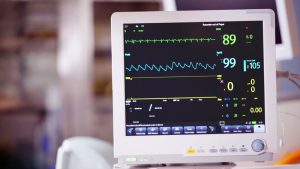Where & When:
The testing will be conducted at middle schools in the fall of each school year.
Connecting The Community To The Classroom
6th grade students attending Leon County Schools will be eligible to receive a free ECG screening test.
The testing will be conducted at middle schools in the fall of each school year.
The ECG screening test will be administered by representatives from the Who We Play For organization. Each electrocardiogram (ECG) heart screening is interpreted by a pediatric cardiologist or cardiologist (for participants 16 and older) volunteering to serve on WWPF’s Medical Advisory Team. These are national and international level experts specifically trained on how to read ECG heart screenings for athletes based on the International Criteria.
Results are returned via email within 3 – 7 business days. Students must be 10+ years old to participate in our heart screening program. All parents/guardians will receive the results of the ECG screening for their child. The interpreted ECGs will be returned to the school with a designation of low risk, follow-up, or high risk, as well as information about particular ECG findings, when applicable.
An abnormal ECG will be flagged for follow-up, which means additional testing is needed to see what is causing that abnormality – think of it as a yellow caution light. It will include documentation on what the potential problem might be.
If a student is flagged as high risk, it is like a red traffic light. He or she should not participate in sports or high-energy activities in any way (practice, games, scrimmages, etc.) until he or she has seen a specialist and received clearance or treatment.
Parents will be notified of the ECG screening dates at least two weeks before the scheduled date and have the ability to opt-out their children of receiving an ECG screening.

An electrocardiogram (ECG) is one of the simplest and fastest tests used to evaluate the heart. Electrodes (small, plastic patches that stick to the skin) are placed at certain spots on the chest, arms, and legs. The electrodes are connected to an ECG machine by lead wires. The electrical activity of the heart is then measured, interpreted, and printed out. No electricity is sent into the body.
Natural electrical impulses coordinate contractions of the different parts of the heart to keep blood flowing the way it should. An ECG records these impulses to show how fast the heart is beating, the rhythm of the heart beats (steady or irregular), and the strength and timing of the electrical impulses as they move through the different parts of the heart. Changes in an ECG can be a sign of many heart-related conditions.
A simple cardiac screening can help detect problems before they become major medical issues and can save lives. It is recommended all active students get an ECG. Students should definitely be screened if they:
Sudden cardiac death is often caused by faulty electrical signaling in the heart. A very fast heartbeat causes the lower heart chambers (ventricles) to quiver uselessly instead of pumping blood. This irregular heart rhythm is called ventricular fibrillation.
Any condition that puts a strain on the heart or damages heart tissue can increase the risk of sudden death. Some conditions that can lead to sudden cardiac death in young people are:
By identifying heart abnormalities that might otherwise go undetected, these screenings help prevent sudden cardiac death — the leading cause of death among young athletes. Most sudden deaths in athletes were attributable to CVD (56%). Of the cardiovascular deaths that occurred, 29% occurred in African-Americans, 54% in high school students, and 82% with physical exertion during competition/training, and only 11% occurred in females, although this proportion has increased over time.
